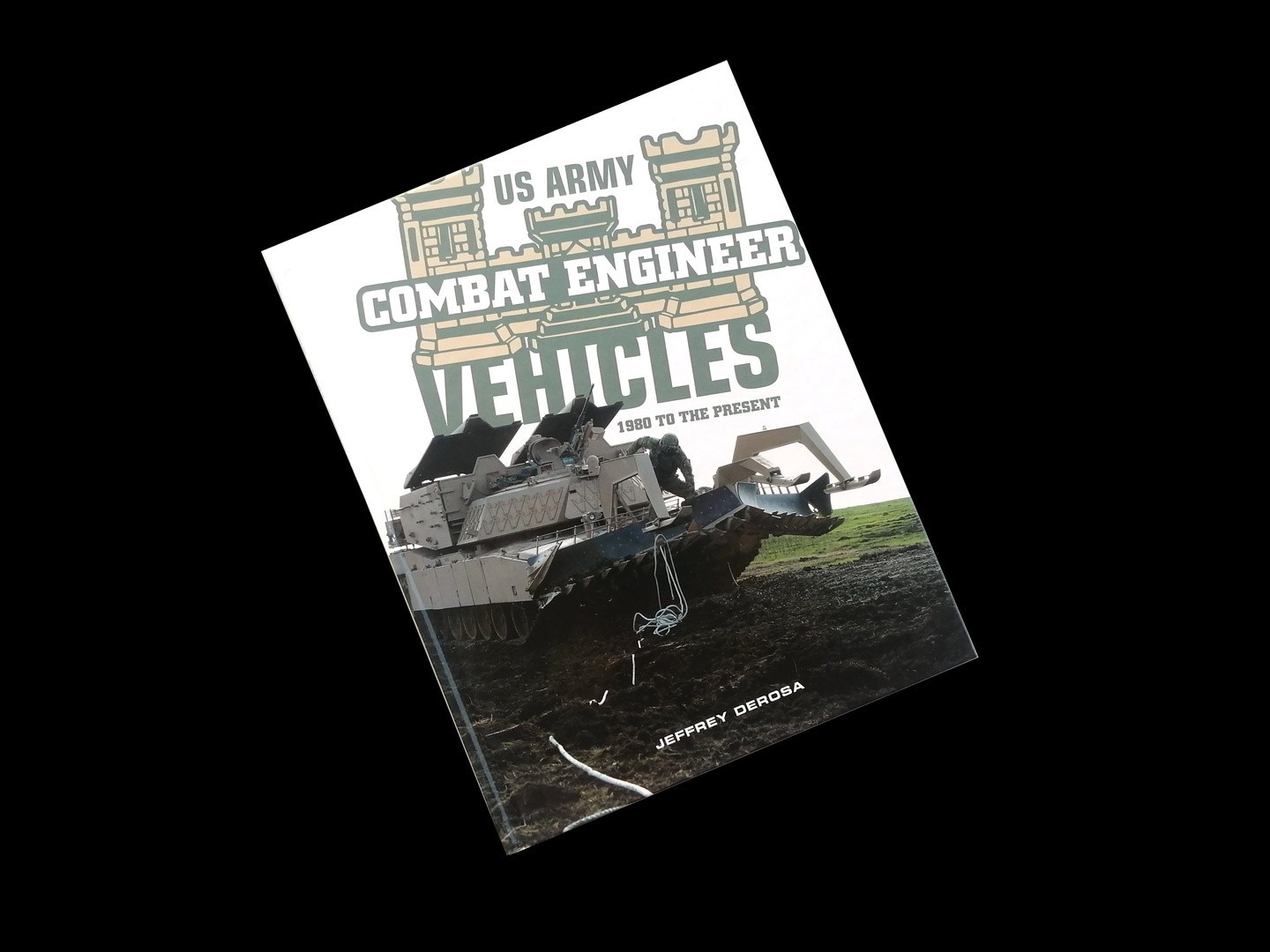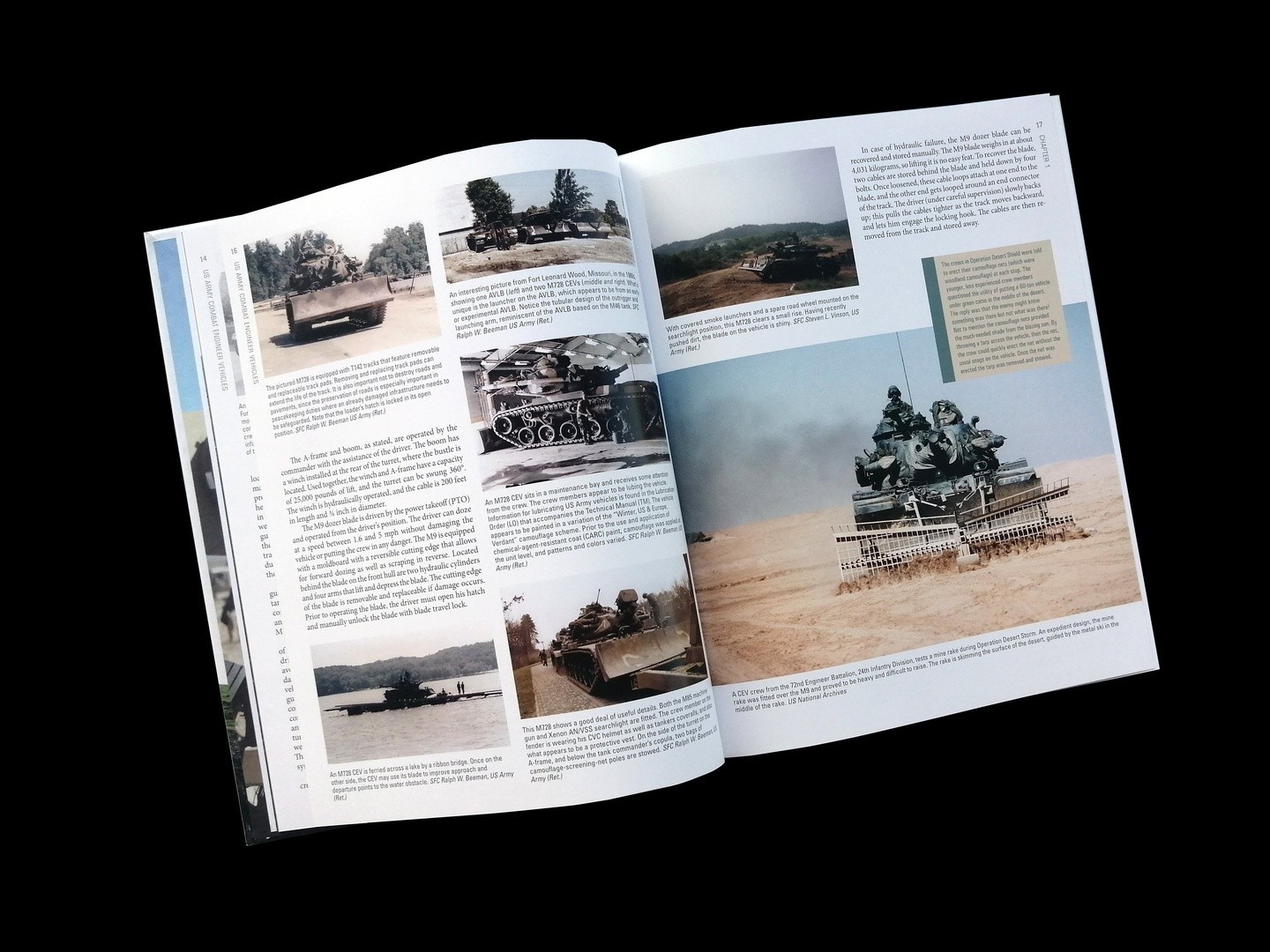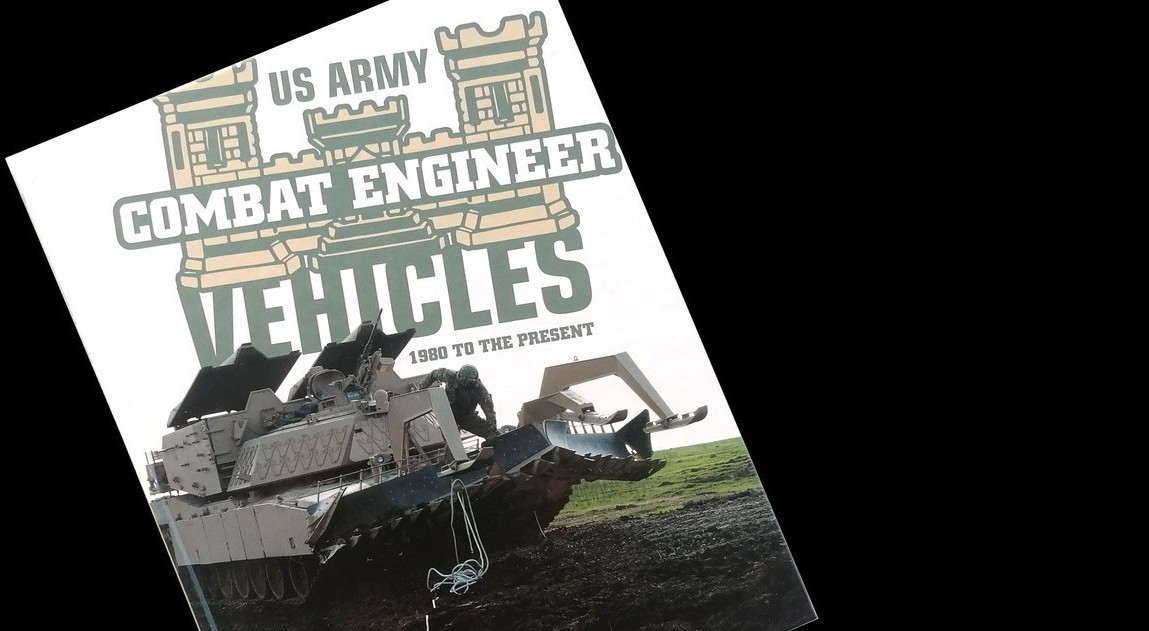US Army Combat Engineer Vehicles is a book written by Jeffrey Derosa and published by Schiffer, dealing with the main vehicles used from 1980 to 2022, when this volume was published.
It is a hardcover book in 28,5cm * 22cm format and with 144 pages in glossy paper. It contains a large number of photos, almost all in colour and in various sizes, from one eighth of a page to some double-page spreads. All have explanatory captions.

After the foreword and the four-page introduction, the first chapter deals with the M728 Combat Engineer Vehicle. The CEV is based on the M60, and its development, characteristics and use are discussed here. There are several diagrams explaining the different parts and armaments as well as many photos of the vehicle in various situations.
Both the photos and the text reveal interesting details of the CEV's use.
The next chapter is devoted to the Armoured Vehicle-Launched Bridge AVLB, also based on the M48 and M60. Again there are diagrams, table of characteristics of both the bridge and the vehicle, details and their use over fifteen pages. The text is very comprehensive, describing the vehicle, its operation and combat service.

Chapter three focuses on the M9 Armoured Combat Earthmover. It has a full description of its design and operation, which was quite unique in order to save weight and make it airborne capable.
There is a good number of photos, where it can be seen in service, removing earth or embarking on a C-130.
The fourth chapter includes several experimental or lesser-used vehicles such as the Armoured Vehicle Launched MICLIC -a mine cleaning device- or the Engineer Assault Vehicle. Only two pages are devoted to each of these vehicles, with some pictures and information.
Chapter five takes up the M9 ACE and M60 AVLB, focusing on their operations after 2000. As their characteristics were covered in the previous chapter, here we find mainly photos, as well as some AVLB operations in Iraq and changes to the M9.

Chapter six is devoted to the M1132 Stryker Enginner Squad Vehicle, with a good description of its capabilities and equipment accompanied by numerous in-service and detail photos.
Chapter seven brings together information and photos of the M2 Bradley, Wolverine and Assault Breaching Vehicle. There is less text on these vehicles and the content is predominantly graphical, with many photos, some of which are large format.

Finally, chapter eight, which closes the book, deals with the Grizzly and Panther II. The former was a High Speed Breaching Vehicle project of which only two units were built and never entered service. There are numerous photos of both units, preserved in museums, with a good level of detail.
The Panther II mine clearing vehicle has been in use in Iraq and there are several photos, equipped with either the Mine Cleaning Roller (MCR) or the Track-Width Mine Plow (TWMP).

Conclusion
This book is an interesting compendium of Engineer vehicles used by the US Army over the last 40 years. Without going too much into the history or technical features, it provides enough information to know what they were like and how they operated.
In addition to the main vehicles, other experimental or lesser-used vehicles are also included. It is important to highlight the author's experience with many of these vehicles, frequently providing anecdotes or comments on their use that make the book very entertaining to read.
The photos are of great value, both for seeing details and for being inspired by the dirt and wear and tear of these vehicles which, because of their function, suffer particularly badly.




























